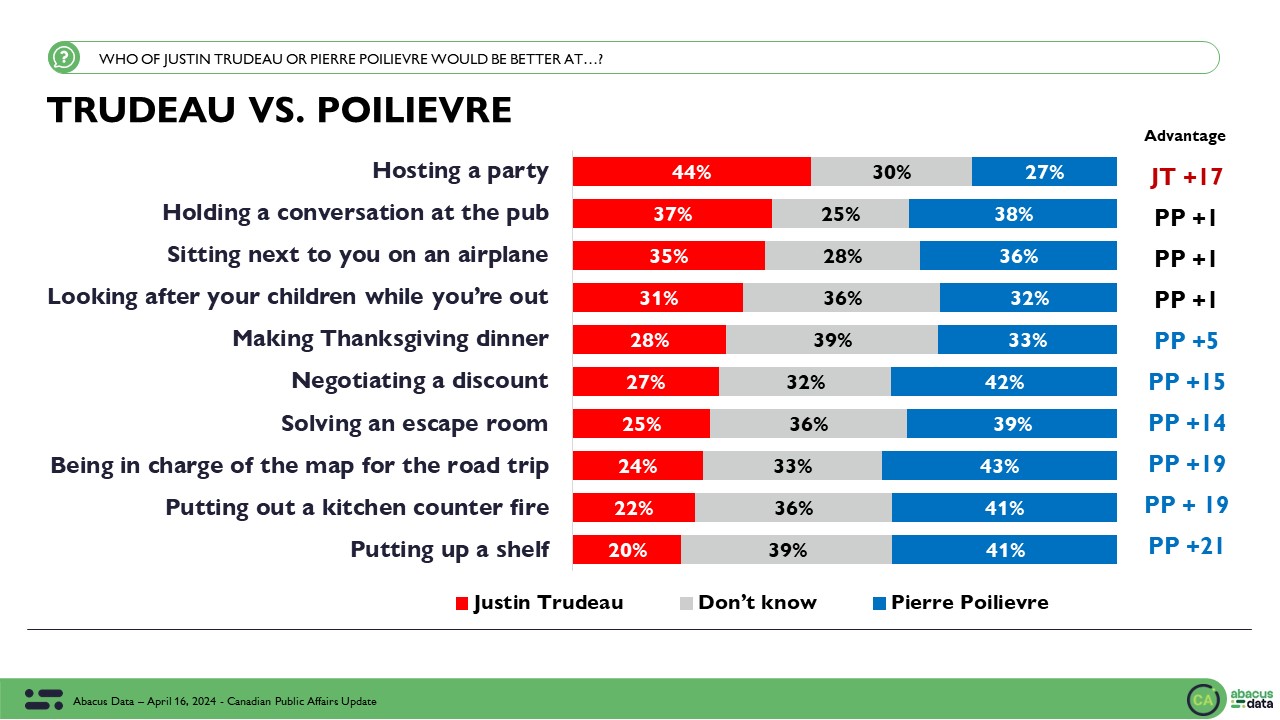CLIMATE, CARBON, AND PIPELINES: A PATH TO CONSENSUS?
October 18, 2016

In our latest survey, in the wake of the federal announcement of a floor price on carbon, we explored questions around the federal government’s approach to energy and climate change. Here’s what we found:
• Roughly two out of three (63%) believe Mr. Trudeau is on the right track when it comes to his overall approach to reducing emissions and combat climate change, including two-thirds support in BC, Ontario, Quebec and Atlantic Canada. In Alberta, 35% say the government is on the right track, as do 28% in Saskatchewan . (caution re small sample size)
• The government direction is supported by 81% of Liberal Party voters, 64% of NDP and 32% of Conservative voters.
NATIONAL CARBON TAX
Respondents were given a brief description of the federal approach to carbon taxation, and here is what we learned:
• 35% said they thought the federal approach was a good one, and another 34% said it was acceptable. Roughly one in three (31%) said it was a poor approach.
• Acceptance (good plus acceptable) of the carbon tax is the majority view in every part of Canada but the Prairies, including 72% in BC, 73% in Ontario, 80% in Quebec and 72% in Atlantic Canada. In Alberta, 63% think the federal approach is a bad idea, and in Saskatchewan, 68% have a negative reaction.
• Across partisan lines, 85% of Liberals, 75% of NDP supporters, and 36% of Conservative supporters say the federal tax approach is good or acceptable. Support is highest among younger people but is the majority view across all age groups.
BROADER ENERGY TRANSITION PLAN
We then asked how people would feel about a plan to “shift Canada’s energy use over the coming decades, including incentives to promote cleaner transportation and buildings, and pricing carbon to encourage a shift towards greater use of cleaner energy.”
• 86% support or can accept a plan along these lines, including majorities in every region of the country, including substantial majorities in the Prairies and across party lines.
BROADER ENERGY TRANSITION PLAN PLUS A PIPELINE
We then asked, “let’s imagine that while putting in place these measures to encourage a shift to renewable energy, the federal government also approved a new pipeline to get Canada’s oil and gas to new markets, would you strongly support, support, accept, oppose, or strongly oppose such a decision?”:
• Three out of four (76%) would support (41%) or accept (35%) this decision.
• Majorities in every region support or could accept this approach, including a striking 92% in Alberta and 83% in Saskatchewan, and the very large majority of Conservative voters (87%). A majority (62%) of NDP voters would go along with this decision.
A closer look at the interaction of different policy measures shows that:
• Among those who think the federal government is on the right track on energy and climate, 23% would shift oppose a policy mix that includes a pipeline.
• Among those who say the federal government is on the wrong track, 48% say they would become supportive of a policy mix that includes a pipeline.
• Among those think the national carbon price is a good idea, 23% say they would shift to oppose a policy mix that included a pipeline.
• Among those who think the national carbon price is a bad idea, 52% say they would shift to support a policy mix that includes a pipeline.
THE UPSHOT
According to Bruce Anderson:
“Few things are more politically charged in Canada these days than the mixture of policies the federal government may embrace to combat climate change and to support economic activity in the oil and gas sector.
So far, Ottawa is holding a relatively broad measure of support for its policy approach, including the introduction of a floor price for carbon emissions. However, voters in Alberta and Saskatchewan are clearly outside this consensus.
Going forward, the numbers suggest there is a path to creating more comprehensive national support, with a blend of carbon pricing, incentives to promote a shift in energy use, and adding pipeline capacity to get Canada’s oil to markets while a shift towards more renewable energy is underway.
While different elements of such a policy mix would likely attract criticism from different quarters, if the question is whether it is possible to carry a majority of support in every region of the country, taking into account competing interests and visions, the evidence is that this is in fact possible, in theory at any rate.”
METHODOLOGY
Our survey was conducted online with 1,500 Canadians aged 18 and over from October 7 to 12, 2016. A random sample of panelists was invited to complete the survey from a large representative panel of over 500,000 Canadians.
The Marketing Research and Intelligence Association policy limits statements about margins of sampling error for most online surveys. The margin of error for a comparable probability-based random sample of 2,010 is +/- 2.6%, 19 times out of 20.
The data were weighted according to census data to ensure that the sample matched Canada’s population according to age, gender, educational attainment, and region. Totals may not add up to 100 due to rounding.
ABACUS DATA INC.
We offer global research capacity with a strong focus on customer service, attention to detail and value-added insight. Our team combines the experience of our Chairman Bruce Anderson, one of Canada’s leading research executives for two decades, with the energy, creativity and research expertise of CEO David Coletto, Ph.D.




